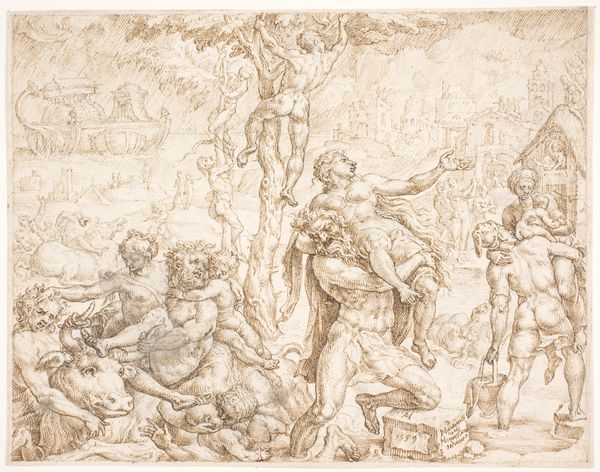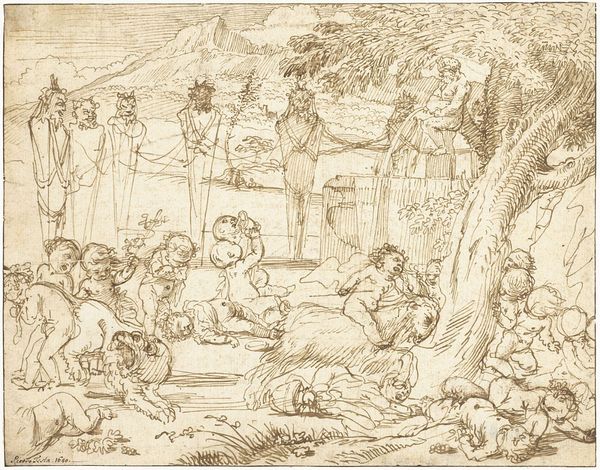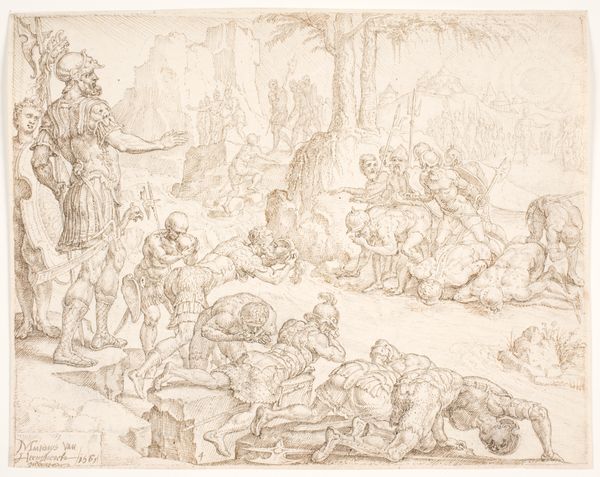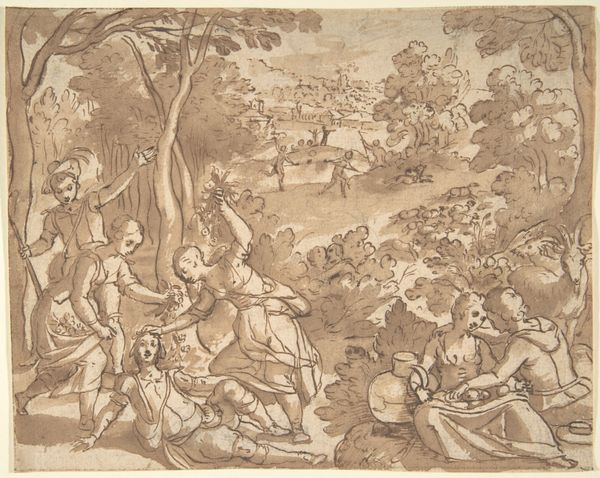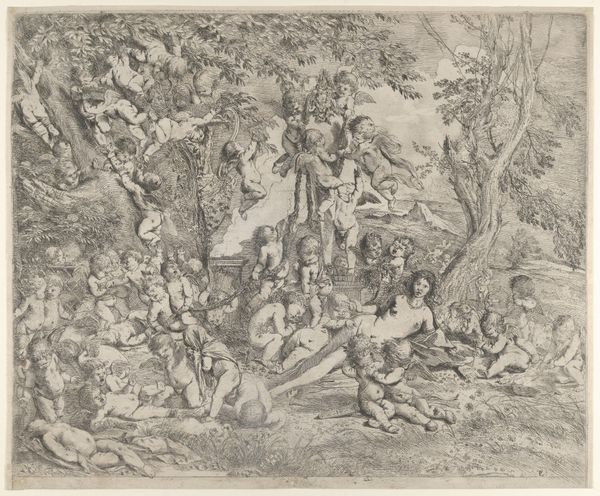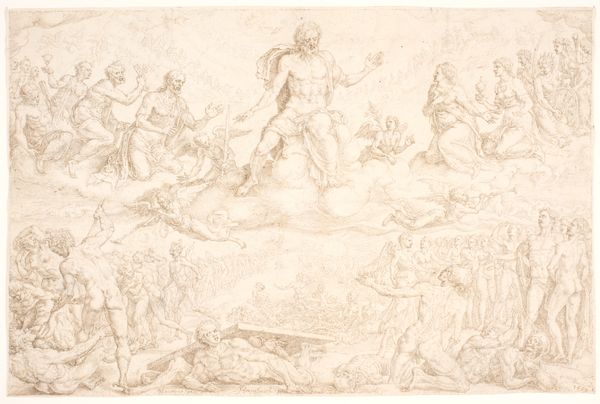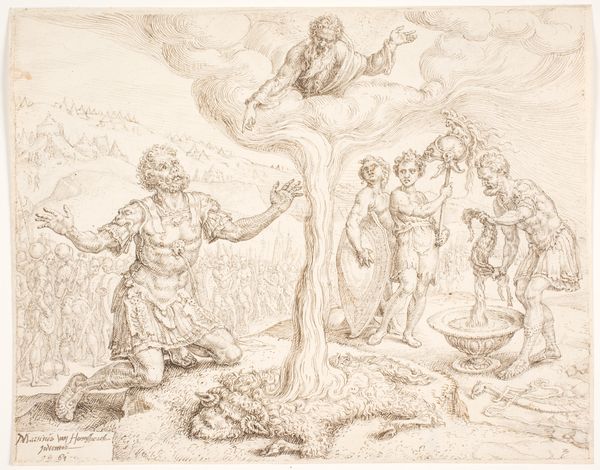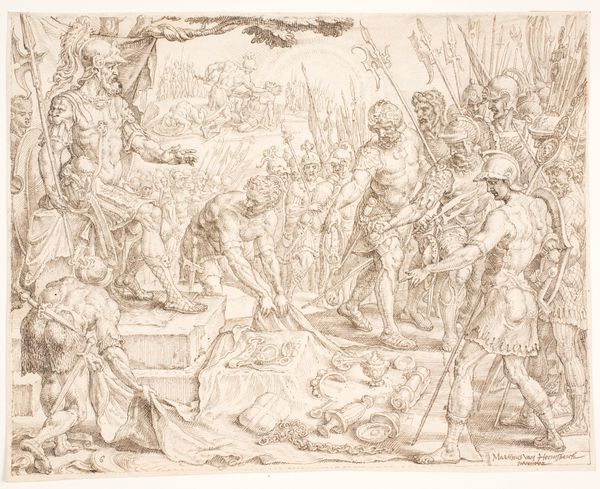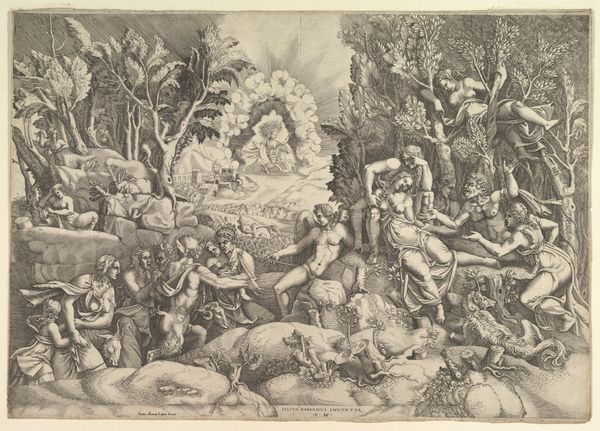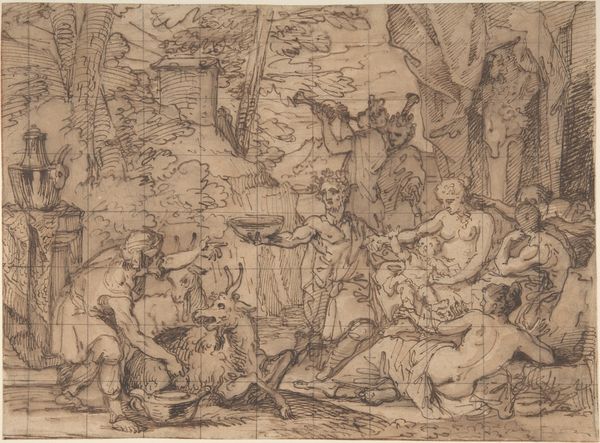
drawing, ink
#
drawing
#
ink drawing
#
narrative-art
#
ink painting
#
figuration
#
11_renaissance
#
ink
#
history-painting
#
italian-renaissance
Dimensions: 241 mm (height) x 385 mm (width) (bladmaal)
Curator: This drawing, "Death of Procris," likely from the 16th century, offers us a fascinating glimpse into Renaissance storytelling. It's rendered in ink. Editor: Wow, it feels both crowded and desolate at the same time. All those figures, tangled together in such muted tones, it’s like witnessing a dream… or perhaps a nightmare. Curator: It depicts a tragic scene from Ovid’s Metamorphoses. Procris, accidentally killed by her husband Cephalus during a hunting trip. See how the artist groups figures in the foreground? Almost like a theatrical stage. We’ve got Cephalus cradling Procris, surrounded by mourning figures. In the background, other mythical beings frolic unaware. Editor: Yes, that dichotomy really strikes me. The raw grief of the immediate scene contrasts sharply with this almost whimsical detachment in the background. The landscape itself seems indifferent to Procris’s demise. Did the Renaissance audience respond differently to themes of grief and mortality, compared to now? Curator: Renaissance art often served to instruct and moralize. It invites us to contemplate human flaws and their consequences, doesn't it? We're reminded about fidelity, jealousy, even hubris... and, perhaps more deeply, the Renaissance interest in rendering the classical, almost formulaic, moral tale, and the skill and labor that went into the ink medium at the time. Editor: True! But I’m drawn to the sheer emotion, despite the classical rendering, those are very visceral. Do you think the museum context shifts how we perceive pieces like this? It's one thing to see a reproduction, but standing before the actual artwork changes the nature of the exchange entirely. Curator: Absolutely. Museums have historically played a key role in shaping aesthetic values. By displaying and preserving artworks like "Death of Procris," we grant them cultural value, suggesting their importance to the broader understanding of history and cultural change across society. Editor: This image tells the most beautiful but heartbreaking fable; one filled with remorse, and more relevant than ever today, I find. Thanks for shedding some light on it. Curator: My pleasure. I am still contemplating how cultural shifts affect these timeless human dramas rendered so vividly through form and composition.
Comments
No comments
Be the first to comment and join the conversation on the ultimate creative platform.
